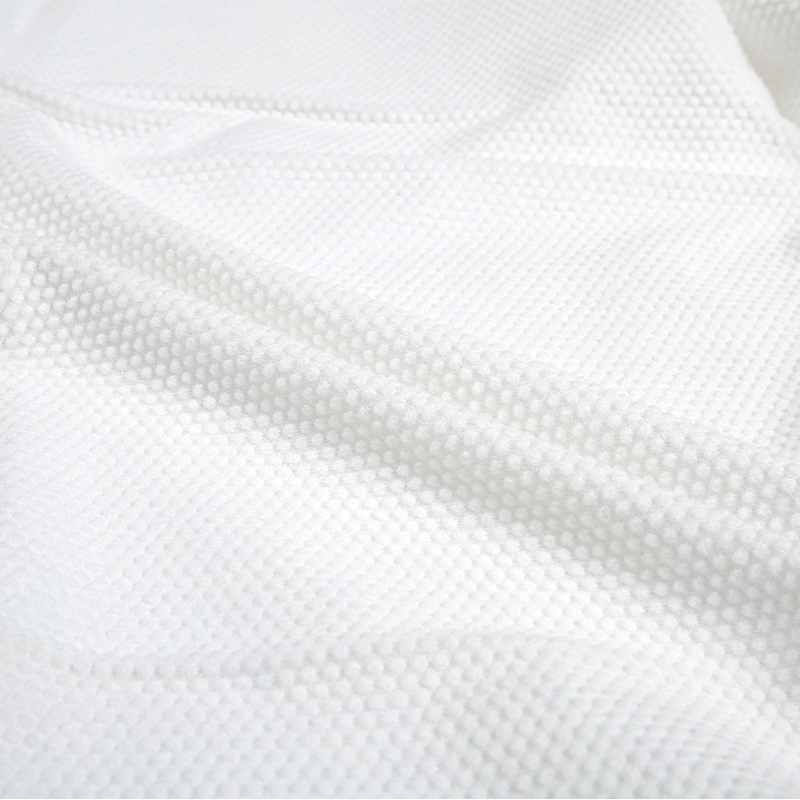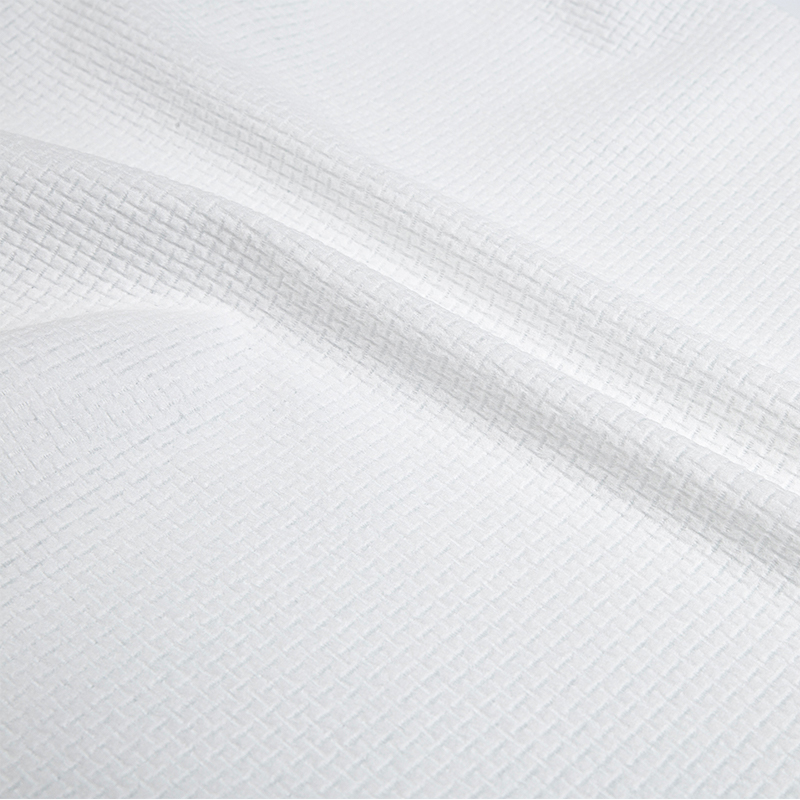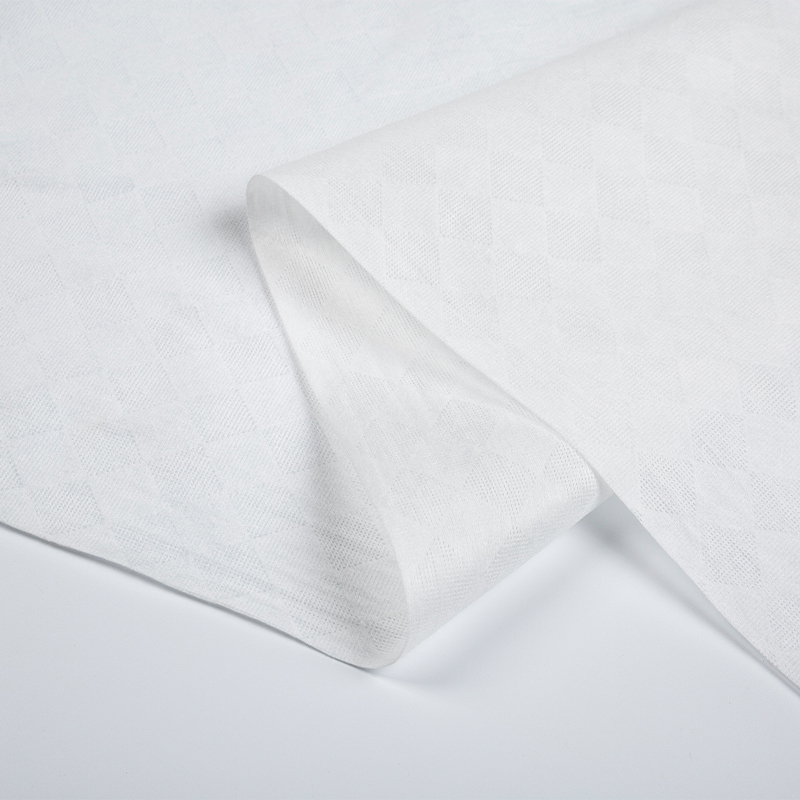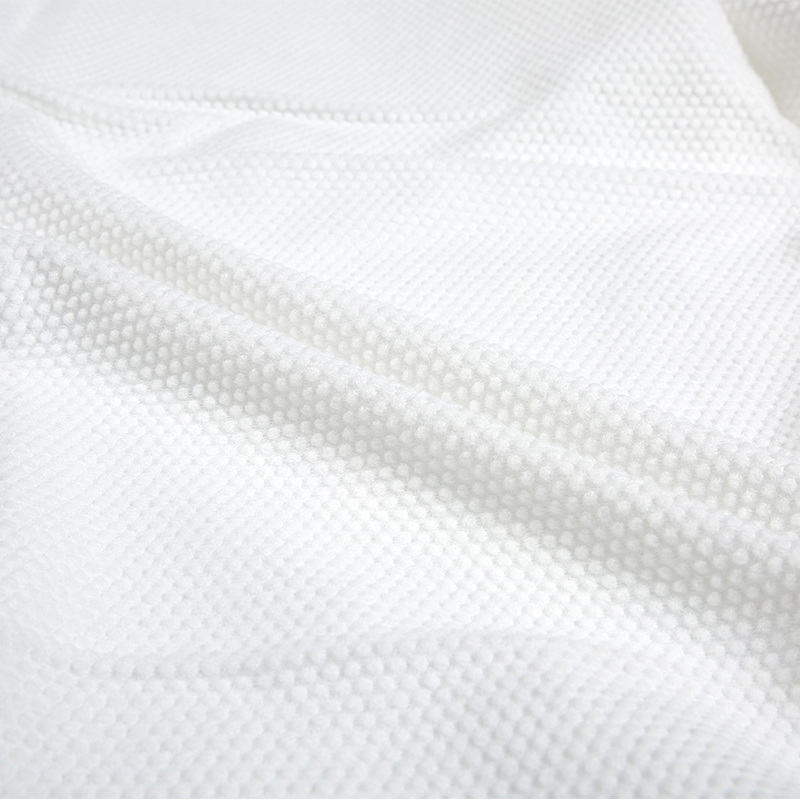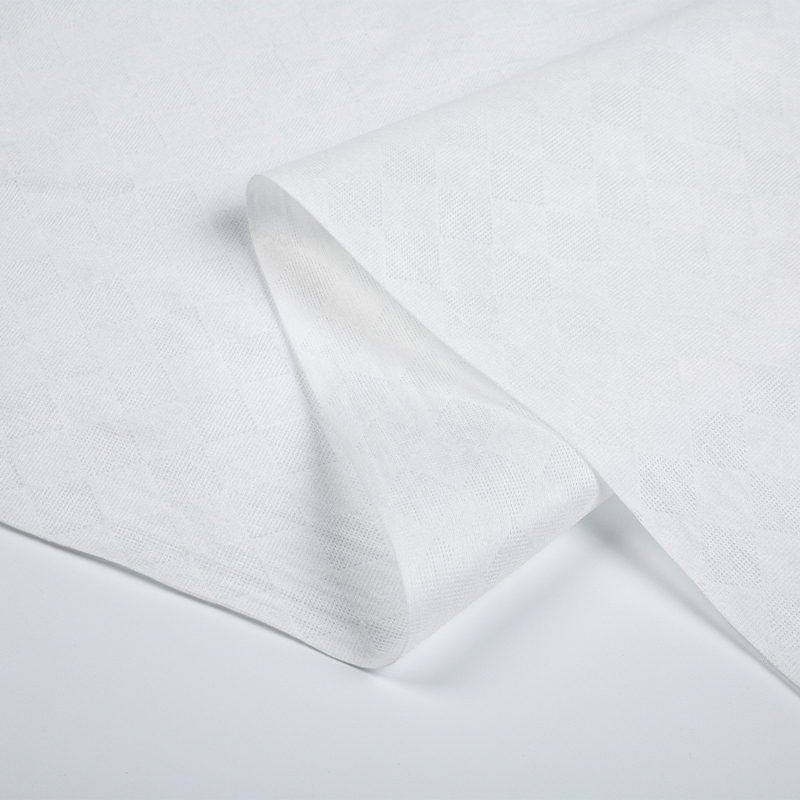Founded in 2022, Hangzhou Shunlong Nonwovens Technology Co., Ltd. is a professional China nonwoven fabric manufacturer and non-woven raw material factory
Semi-Cross Spunlace Nonwoven, referred to as SCS nonwoven, is a nonwoven material produced through a special process. Its production process combines multiple processes such as spinning, spunlace, and drying. The final product is soft, breathable, and highly hygroscopic. It is widely used in medical, health, beauty, home furnishing and other fields.
1. Spinning process
The first step in the production of Semi-Cross Spunlace Nonwoven, its core technology is the melt spinning method. In this link, the polymer particles are fed into the spinning machine, and after being melted at high temperature, they pass through the spinneret to form continuous fiber bundles. During the spinning process, melting temperature, spinning speed and cooling conditions need to be precisely controlled to ensure fiber uniformity and strength.
2. Net laying process
After the spinning is completed, the fiber tows are evenly laid through the laying machine. The web laying machine uses airflow or mechanical means to lay fiber tows on the conveyor belt in a predetermined direction and density to form a preliminary nonwoven network layer. In this process, the control of fiber dispersion, uniform arrangement and network layer thickness is key, which directly affects the subsequent performance of Semi-Cross Spunlace Nonwoven.
3. Pre-spunlace process
Pre-spunlace is a key link in the production of Semi-Cross Spunlace Nonwoven. At this stage, the initially formed nonwoven mesh layer is sent to the hydroentanglement machine, and the fibers are impacted by high-pressure water flow, causing the fibers to intertwine and tangle with each other to enhance the firmness of the mesh layer. During the pre-spunlace process, the pressure, speed and direction of the water flow need to be precisely controlled to ensure the interweaving effect of the fibers.
4. Cross-laying and spunlace reinforcement
The pre-spunlaced nonwovens are then cross-laid. In this step, the mesh layers are laid crosswise at a certain angle to form a multi-layer structure to increase the thickness and strength of the product. Subsequently, spunlace reinforcement is performed again, using high-pressure water flow to make the fibers between different layers more closely intertwined to form a stable multi-layer structure.
5. Drying and heat setting
The spunlace-reinforced nonwoven fabric contains a lot of moisture and needs to be dried in a dryer. During the drying process, temperature, humidity and wind speed must be controlled to avoid product deformation or shrinkage. After drying, the product also needs to undergo heat setting treatment. Through heating and pressure, the structure between fibers is made more stable and the dimensional stability of the product is improved.
6. Winding and cutting
After drying and heat setting, the SCS nonwoven fabric has been basically formed. At this time, the product will be fed into the winding machine for winding to form a continuous roll product. According to needs, it can also be cut to cut rolled products into sheet products of different widths to facilitate subsequent use and processing.
7. Quality inspection and packaging
At the final stage of the production process, SCS nonwovens need to undergo strict quality inspection, including appearance inspection, dimensional measurement, physical performance testing, etc., to ensure that the product meets relevant standards and customer requirements. Qualified products are packaged for shipping and storage.
The production process of Semi-Cross Spunlace Nonwoven involves multiple key technologies and processes such as spinning, laying, spunlace, drying, heat setting, winding and cutting, as well as quality testing and packaging. These links are interrelated and influence each other, and jointly determine the performance and quality of the final product. By continuously optimizing the production process and technical parameters, the performance and market competitiveness of SCS nonwovens can be further improved.

 English
English 日本語
日本語 русский
русский Español
Español